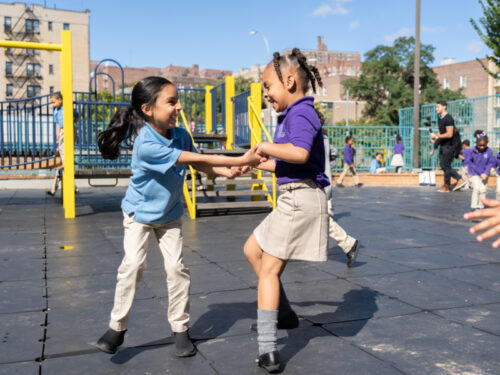
I have long believed that the perniciousness of low expectations is the primary root cause of poor educational outcomes in public education—and particularly in low-income urban areas. But I now have a deeper understanding after our first 7 months of schooling at Zeta: the issue is not just the perniciousness of low expectations, but the slow erosion of high expectations.
Even with our past experience with the gravity-defying academic outcomes of thousands of children at Success Academy, we constantly battle against the erosion of high expectations, including within ourselves. Some of our students came to us significantly below grade level and have massively struggled with our rigorous curriculum. Reasonable questions lurk in our minds—is it fair to expect all students to achieve our high standards of mastery when some are struggling with the most basic of concepts? Can they do it?
Of course, we know the answer is “yes,” that when adults do not believe that all children can meet high standards, children are often condemned to lives that fall far short of their potential. But sitting across from children struggling with the material, it is easy to question and to make excuses for why not—giving way to the slow erosion of high expectations.
To inoculate against this erosion, we start with rigorous curricula. Our curricula sets a high bar by ensuring that children tackle increasingly challenging concepts and work, insisting on conceptual understanding rather than rote learning, facilitating the transformation of student ideas into the beginnings of elegant writing. Key to our curricula is what I can best describe as a faith built into its standards that all children are capable of high-level mastery.
Equally important, we start with a team of “believers” in the ability of all children to achieve high-level mastery. Of all inputs, this one is most crucial. If you can’t see—as indisputable fact in your mind’s eye—every child in your classroom getting over the finish line, some definite and significant number of children will not make it. But if you are certain that each child is capable and can get there with the right support, children rise to your expectations. And when your entire team, from leader to teacher to operations team member, shares and practices this belief, that’s when magic happens.
I have the privilege of seeing this magic every day. Our students are learning, growing at an astonishing rate. We have seen over 60% growth in first grade children meeting grade level standards in mathematics between the beginning of the year and now. In kindergarten, many students came to us as pre-readers. Now, over 70% of our K students are reading on or above grade level—and growing. Our students are sharing ideas, learning new vocabulary, and practicing empathy in social-emotional learning circles, rising toward their highest potential. It’s hard to describe the awe of witnessing first-hand this powerful transformation in children, led by the relentless efforts of our academic leaders Paola Zalkind, Shea Reeder, and Amanda Simmons and their incredible leader and teacher teams. They are the truest of believers in the potential of our students, and the power of their belief has begun to manifest in remarkable ways for children.
